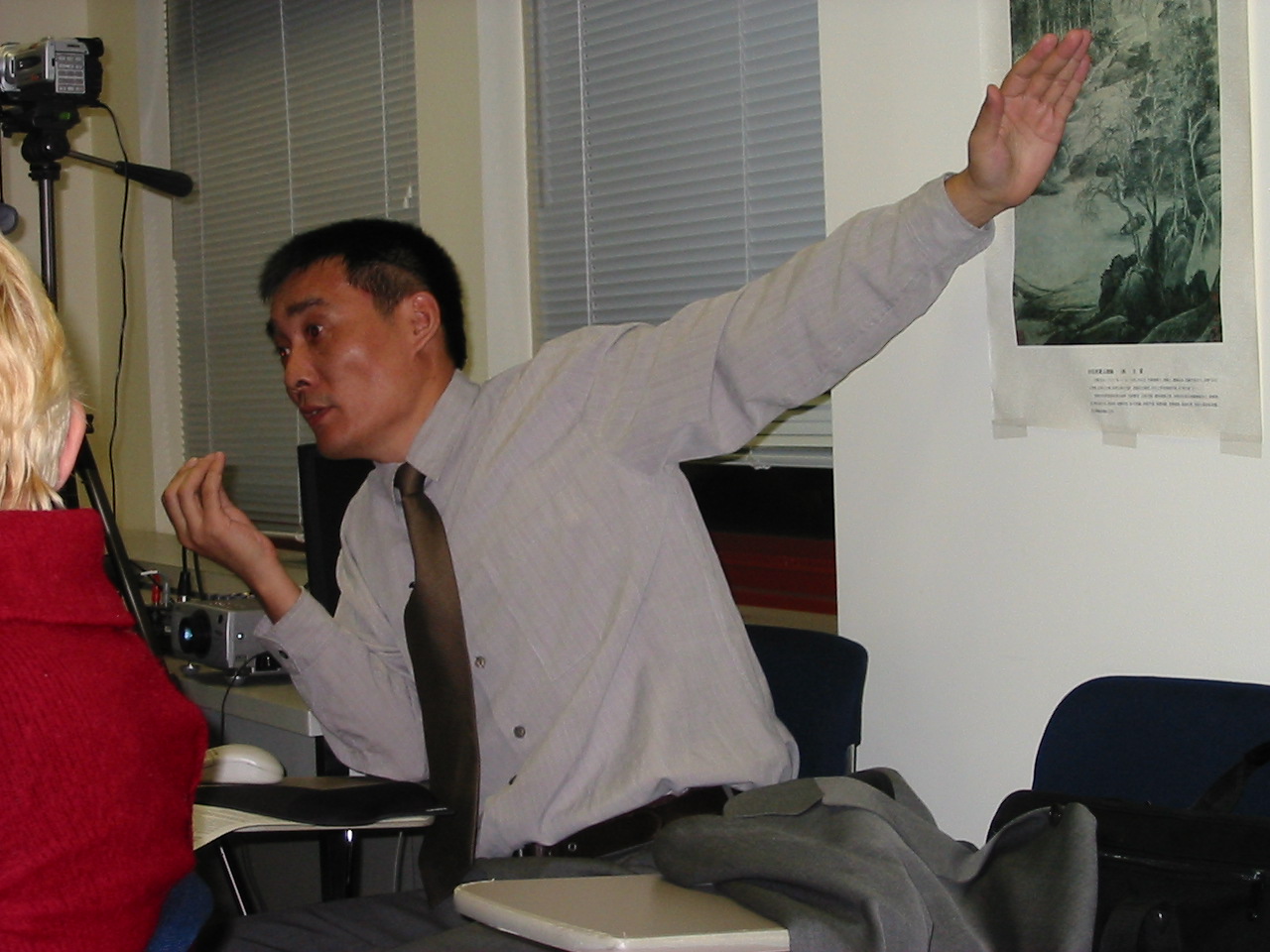

An important issue within the contemporary Chinese art circle is the close relationship between Eastern and Western cultures, and their effects on one another when it comes to traditional Chinese painting and calligraphy. Chinese art today is heavily influenced by Western art and concepts, particularly ink and oil paintings, and performance arts. By transforming both conventional and contemporary Western vocabulary, Chinese artists are now negotiating culture differences between the past and present, self and others, as well as styles and ideas. Five mainstreams artists in particular have ushered in this modern take on traditional Chinese art over the past century, the oldest, 95 years old and the youngest, 46 years old.
The differences between Western paintings and Chinese paintings are undeniable, for each defines itself in its own unique, yet subtle way. Western paintings are usually more direct in its message, realistic in perception and intense with details. Chinese paintings however are mostly indirect in its message, impressionistic in perception and relatively simple with details. Their difference correlates with each culture’s way of thinking, philosophies and lifestyles.

C.C. Wang is by far one of the most famous masters of Chinese art still living today. Not only a famous painter, he is also a calligrapher and philosopher. His unique styles and techniques have influenced many young artists today. Coming to the United States in 1947, Mr. Wang studied art history at a famous school for abstract expressionism in New York. Using the Northern Sung Dynasty style of painting as the basis for his own works of art, Mr. Wang has taken the simplicity of tradition and added a whole new dimension through his use of strong, thick, and bright tonal colors. Creating textures through the use of accidental effects, Mr. Wang’s departure from the more traditional planning of each brush stroke, has resulted in his ability to evoke an abstract feeling from his art, including his calligraphy.
Believing that humans should take the feelings and rights of their animal counterparts into consideration, Su Xinhong, the chairman of an art institute on oil and Chinese paintings, uses humanism and the environment as the inspiration for his art. Using bright colors and ink techniques, Mr. Su creates heavy layers of colors to compliment the symbolic subject matter within his paintings. Though art, peace is attained, both unique and decent, it is a mix of both Western concepts and Chinese colors that allows us to “relax in his troublesome life.”


Zhang Hongtu, a vanguard artist born in Beijing, China, who attended the Central Academy of Fine Arts, moved to the United States 18 years ago and started his career as a painter of Mountain/River art, utilizing the styles of Van Gogh and Monet. Different from landscape painting, which has fewer colors, details and emotional input from the artist, Mr. Zhang’s injection of Western impressionism into his work, has given a newly found energy and perspective on a 2000-year-old tradition. Taking into consideration movement, space and time, Mr. Zhang’s philosophy is that it is beneficial to recycle old styles in order to create new things.
At first glance, the art of Xu Yongmin, a professor and executive vice-president of the Hubei Fine Artists’ Association, may look like oil or water colors to the naked eye, but in reality it is Chinese ink on rice paper. Criticized for being commercialistic, and anti-traditional by his peers, Mr. Xu believes that there should reform in the way things are done, that Chinese painting should embrace Western techniques and ecstatic theories, using more durable materials for longer lasting creations.


Born in Central West China, Fan Feng was the earliest pioneer in the reformation of Chinese paintings during the 1970’s. Utilizing the Sung Dynasty effect, he believed that colors and textures were more important than techniques of the brush and ink. Criticized for being too westernized, Mr. Fan’s art departs from tradition, adding abstraction into the typical Chinese painting of the bird’s eye perspective with fresh colors.
Not until after the 1980s, when the Open Door Policy with China was put fully in effect with the United States, did the acceptance of modern Western ideas seep into the traditional Chinese way of painting.
Synopsis by Antony Wong

